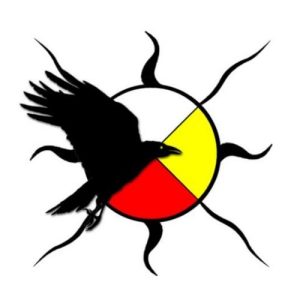 Red Dress Day is the National Day of Awareness for Missing and Murdered Indigenous Women, Girls and 2SLGBTQI+ people. It’s a day to call attention to the critical need to address the violence they face and honour those lost.
Red Dress Day is the National Day of Awareness for Missing and Murdered Indigenous Women, Girls and 2SLGBTQI+ people. It’s a day to call attention to the critical need to address the violence they face and honour those lost.
Red Dress Day takes place on May 5 each year, but because that’s a Sunday this year, the Mount Saint Vincent University community will mark Red Dress Day on Friday, May 3. These events are being hosted by the Indigenous Student Centre team at MSVU. All are welcome.
Red dress installation
On Friday, May 3, a number of red dresses will hang from the trees on the MSVU campus adjacent to the Bedford Highway. These empty dresses are reminders of the lives lost.
Guest speaker – Denise Pictou Maloney
10 a.m., May 3, outdoors in front of the Seton Academic Centre at MSVU (or in the lobby if it’s raining) [campus map]. There will also be singing and drumming to open this event.
Denise Pictou Maloney is the daughter of Annie Mae Aquash who was murdered at 30 years of age.
Lunch
A light lunch will follow in Seton Room 407/409. Luncheon RSVPs are required; please RSVP to indigenousservice@msvu.ca by April 30 if you plan to attend the luncheon. All are welcome
All are encouraged to wear red on May 3 at MSVU and on May 5 too.
MSVU is located in Kjipuktuk (Halifax), part of Mi’kma’ki, the unceded ancestral territory which remains the homeland of the Mi’kmaq Nation. This territory is covered by the Covenant Chain of Treaties of Peace and Friendship signed between 1725 and 1779. These treaties are affirmed by the Supreme Court of Canada and recognize Aboriginal Title (which is embedded in both the 1763 Royal Proclamation and in section 35(1) of the 1982 Constitution Act). The treaties are living agreements that establish the rules for an ongoing Treaty relationship between nations. We pay respect to the knowledge embedded in the Mi’kmaw custodians of the lands and waters and to the Elders, past, present, and future.
More information
About Red Dress Day
From the Native Women’s Association of Canada: “In 2010, Métis artist Jamie Black began The REDress Project. It began as an art installation that hung hundreds of empty red dresses in public spaces to remind people of the First Nations, Métis, and Inuit women and girls lost because of gender-based violence. Jamie Black’s project gained national and international attention and inspired a movement for change.
The REDress project is a call to action. This call to action and the epidemic of gender-based violence targeted at Indigenous women, girls, and 2LGBTQQIA+ peoples that inspired the REDress project is at the heart of the work the Native Women’s Association of Canada (NWAC) has done since 1974. … We cannot forget our lost grandmothers, mothers, sisters, aunties, and the 2SLGBTQQIA+ members of our communities. We must work together to redress this violence.”
One of the pillars of MSVU’s current strategic plan, Strength Through Community, is a commitment to advancing meaningful truth and reconciliation, including providing education and raising awareness about missing and murdered Indigenous women, girls and Two-Spirit People. A number of initiatives are in progress across the university, including by the pan-university Truth and Reconciliation Committee. These efforts are being undertaken with the guidance of Violet Paul, Special Advisor on Indigenous Affairs, and the L’nu Advisory Circle at MSVU.
Support for those affected
A reminder that there are supports available for families of missing and murdered Indigenous women, girls and Two Spirit people, including immediate emotional assistance, referrals to additional services, and culturally-specific help.
Statistics from the Assembly of First Nations (2020)
Indigenous women are four times more likely than non-Indigenous women to be victims of violence.
- Indigenous women make up 16% of all female homicide victims, and 11% of missing women, yet Indigenous people make up only 4.3% of the population of Canada.
Indigenous women are twice as likely to experience violence from their current or former partner.
- A little more than 13% of Indigenous people experience violence from their current or ex-partner, a proportion twice as high as non-Indigenous people (5.7%).
Indigenous women are more likely to experience physical and sexual assault than non-Indigenous women.
- 56% of Indigenous women have suffered physical assault, and 46% have experienced sexual assault. By comparison, about one-third of non-Indigenous women have suffered these assaults in their lifetimes.
From 2001 to 2014, the average rate of homicides involving Indigenous female victims was four times that of those involving non-Indigenous female victims.
“Current public data on MMIWG oversimplifies and underrepresents the scale of the issue, yet still demonstrates a complex and pervasive pattern of violence against Indigenous women and girls who are often targeted because of their gender and Indigenous identity.” (Assembly of First Nations)
Additional Resources
Watch: Protect our Future Daughters
Read: Forever loved: Exposing the hidden crisis of missing and murdered indigenous women and girls in Canada by Jennifer Brant and D. Memee Lavell-Harvard.
Visit the Indigenous Resource Hub / L’nuey Etl-Mawo’tumk for more.